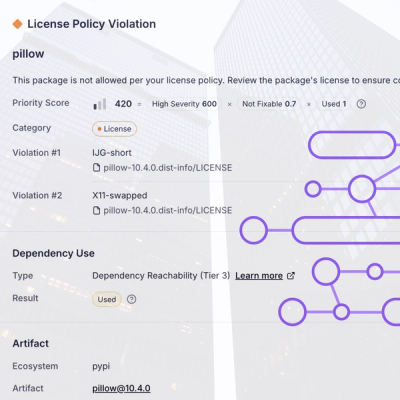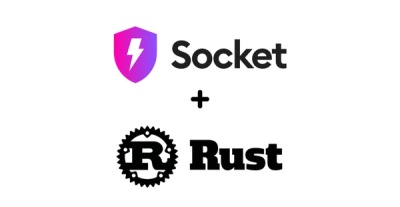
Research
/Security News
Critical Vulnerability in NestJS Devtools: Localhost RCE via Sandbox Escape
A flawed sandbox in @nestjs/devtools-integration lets attackers run code on your machine via CSRF, leading to full Remote Code Execution (RCE).

Tangram is a JavaScript library for rendering 2D & 3D maps live in a web browser with WebGL. It is tuned for OpenStreetMap but supports any source of GeoJSON/TopoJSON or binary vector data, including tilesets and single files.
Here's a simple demo (repo here) with a basic example of a Tangram map.
Tangram is instantiated as a Leaflet plugin for integration with standard web maps. Tangram ES is a native mobile version of the Tangram library, written in C++.
Tangram is published in two build flavors: one for current browsers (bundled as an ES module, using modern JS and web platform features), and one for older browsers (specifically IE11, with modern JS transpiled to older ES5 syntax). You can use this snippet to automatically load the best one for your browser, using the module/nomodule pattern:
<!-- modern browsers load the optimized .mjs file, older browsers (IE11) load the transpiled .js file -->
<script type="module" src="https://unpkg.com/tangram/dist/tangram.min.mjs"></script>
<script nomodule src="https://unpkg.com/tangram/dist/tangram.min.js"></script>
Note: Because scripts with the module type automatically load in "deferred" mode, you must make sure to include the defer keyword for any scripts you load that depend on Tangram (so that they won't run until Tangram is finished loading). For example, if your app code is in index.js, load it like this (anywhere after the Tangram <script> tag):
<script defer src="index.js"></script>
Specific Tangram library versions can also be loaded with @version syntax(see unpkg for details). Versions earlier than v0.16.0 do not use the module syntax; use a single script tag to load them instead: <script src="https://unpkg.com/tangram@0.15.5/dist/tangram.min.js"></script>.
Tangram is published on NPM and can be bundled using import or require.
The library includes a Leaflet plugin, Tangram.LeafletLayer, to provide basic web map pan/zoom functionality.
Data sources, layers, and styling rules are written in a scene file (here's an example). Armed with a scene file like scene.yaml, you can create a Tangram scene and add it to a Leaflet map like so:
var map = L.map('map');
var layer = Tangram.leafletLayer({ scene: 'scene.yaml' });
layer.addTo(map);
Read on for more info, or see the documentation (github repo).
simple-demo - A minimal demo showing the basic setup
highways-demo - Zoom-dependent styles and contextual filtering rules
gui-demo - Control styles in real-time with a gui
shaders-demo - Simple glsl shaders
Tangram-sandbox - More complex glsl shaders
More examples are available here.
Instead of loading traditional bitmap tiles, Tangram draws its own tiles from scratch, based on vector tiles that contain the source data.
Nextzen provides a free vector tile service based on open data from OpenStreetMap, Natural Earth, Who's On First and other projects, with worldwide coverage updated continuously -- sign up for an API key here.
Tangram currently supports GeoJSON & TopoJSON-based tiles, as well as Mapbox's MVT binary format.
The scene file is where you specify data sources and layers, filter the data, and define and apply styles. (In our demos, this file is named scene.yaml.) The rules for doing these things are many and various, but the basics are pretty easy, and they are all meticulously documented in the Tangram Documentation.
The scene file is written in YAML, which is a data-serialization format like JSON, but with less punctuation. Instead, data structures are specified with whitespace, like Python. One neat side benefit is that the format is super friendly to strings, which means you can write inline JavaScript and GLSL code straight into the scene file, without needing to wrap it in quotes or concatenate anything.
For technical reference and concept overviews, see the Tangram Documentation.
For questions, comments, suggestions, or to report a bug, please open a new issue.
You can also find us in the Tangram-chat gitter room: https://gitter.im/tangrams/tangram-chat
Tangram JS is officially supported and tested on the last two versions of these browsers:
Tangram JS should also run in any browser with WebGL support.
Tangram is open-source, and we eagerly welcome feedback, feature requests, and contributions. We’re especially interested to see your maps, no matter how simple! Post screenshots, links, and any questions to our gitter chat.
For instructions, see CONTRIBUTING.md.
Tangram JS was created by Mapzen and is now a Linux Foundation Project.
FAQs
WebGL Maps for Vector Tiles
The npm package tangram receives a total of 823 weekly downloads. As such, tangram popularity was classified as not popular.
We found that tangram demonstrated a healthy version release cadence and project activity because the last version was released less than a year ago. It has 0 open source maintainers collaborating on the project.
Did you know?

Socket for GitHub automatically highlights issues in each pull request and monitors the health of all your open source dependencies. Discover the contents of your packages and block harmful activity before you install or update your dependencies.

Research
/Security News
A flawed sandbox in @nestjs/devtools-integration lets attackers run code on your machine via CSRF, leading to full Remote Code Execution (RCE).

Product
Customize license detection with Socket’s new license overlays: gain control, reduce noise, and handle edge cases with precision.

Product
Socket now supports Rust and Cargo, offering package search for all users and experimental SBOM generation for enterprise projects.